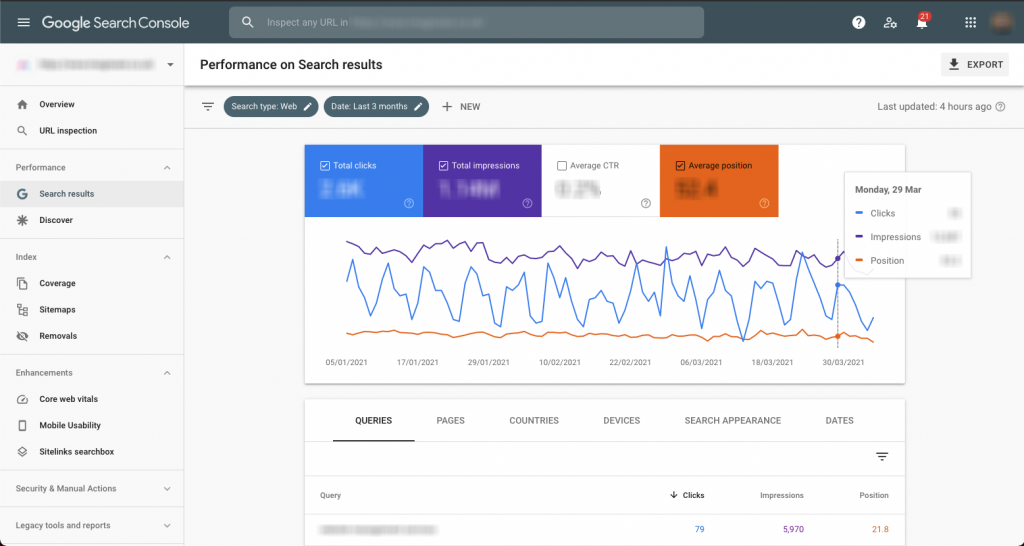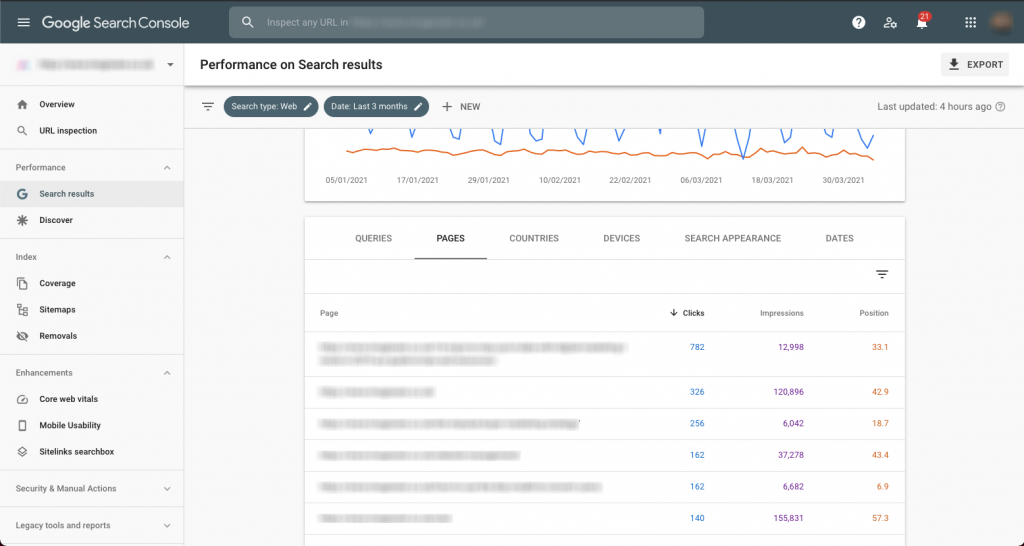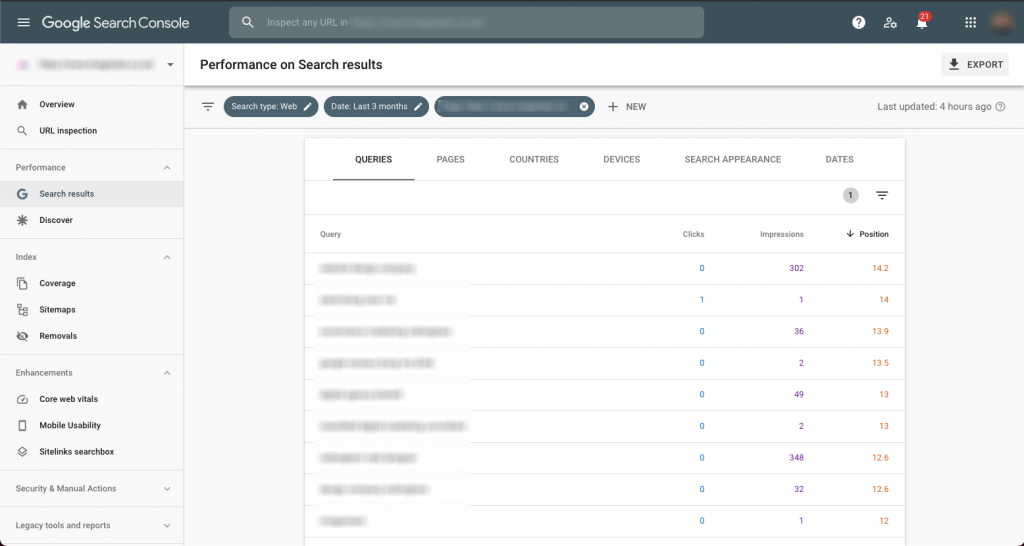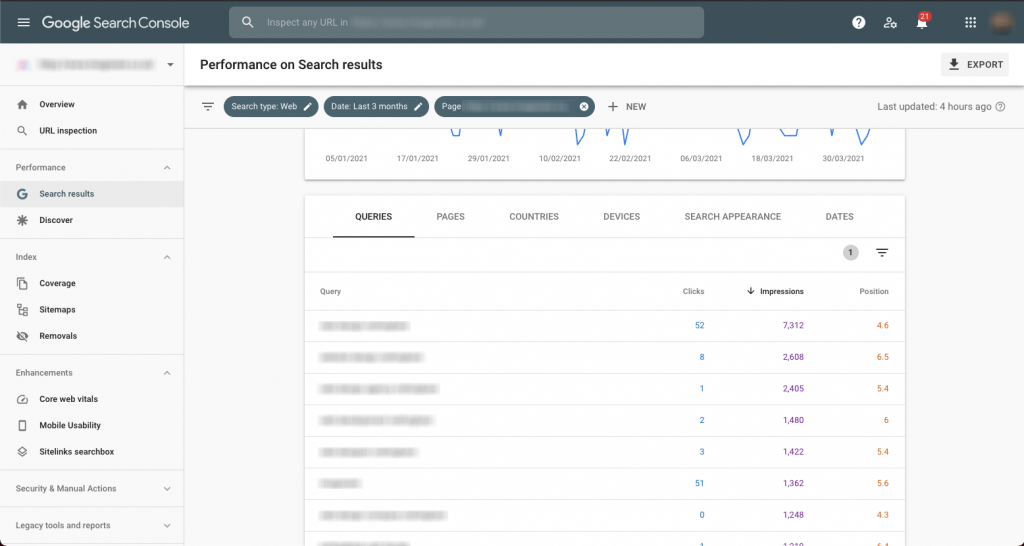When working on the SEO strategy for an established website, it can be easy to become distracted by chasing high-volume keywords and cementing your positions for them. A nice little process that we use for our clients also lets you find new keyword opportunities that you’re close to ranking for.
A common monthly task is to review your keywords in relation to how many clicks and impressions your content is getting off the back of them. While there is a myriad of different tools out there to help you with the job, Google Search Console is one of the best free resources available to do this.
The magic comes when you take a bit of a deeper dive and start finding keywords that your content is already ranking on page 2 for. Low-hanging fruit.
So why do low-hanging fruit keywords matter, and how do find them in the first place? Here’s what you need to know.
Low hanging fruit keywords: An overview
Low-hanging fruit keywords are classed as results that appear on the bottom of page one or on the second page of Google while also having a decent search volume. We tend to prioritise low-hanging fruit keywords by asking these questions:
- Does the page that’s ranking make sense for that keyword? For example, if you’re ranking on page 2 for a phrase such as “buy red shoes” with a blog post about the history of red shoes, the intent doesn’t match the content. However, if your page that’s ranking is a product page, it definitely makes sense for the intent
- Does the keyword have a good level of impressions? This will be contextual to the website. If the website struggles to get more than 500 visitors per month, then a keyword that has had 50 impressions over the past month will be worth targeting. Less so for a busy e-commerce website that gets over 500k visitors per month.
- Is the page we’re trying to rank able to be improved to match the keyword? To start climbing, we’ll need a strategy to improve the page that’s already ranking. To do that, we need to know that we can improve the page and supporting content.
You might be wondering why you’d want to target these keywords.
Low hanging keywords often present a good opportunity based on the fact that Google already likes your content (otherwise it wouldn’t rank within the first 2 pages) and they’re likely to be overlooked by competitors if they don’t have huge search volumes of the short tail keywords. As well as this, the longer the search phrase is, the more likely it is to be very specific and, therefore, have good commercial intent behind it. If a user is searching for “red shoes with black laces size 9” and they find their way to a product page with that exact type of shoe, they’re very likely to convert.
Imagine a group of businesses all shouting the same word in a room aiming to appeal to their customers. It would be difficult to distinguish one from another. This is essentially what happens when everyone targets the exact same keywords, which is why low-hanging fruit keywords offer a much more attainable alternative.
As the name suggests, low-hanging fruit is an opportunity that presents less of a challenge. In the SEO keyword stakes, this means choosing words and phrases that have reduced competition but equally bags of potential. The aim is to use these keywords to allow your rankings to soar because your competitors aren’t focusing on them.
The keywords are still relevant but aren’t the exact same phrases that everyone else is using. It’s an excellent tactic for websites with a smaller SEO budget because it ultimately is going to give you a quick win. The best part? Low hanging fruit keywords actually help you jump to the front pages of a SERP.
How to find keyword opportunities
First open Google Search Console either by signing into your Google account, or linking the domain to the site. Keep in mind you may need to edit your DNS records if you don’t have a linked Gmail account, which could take a couple of days to verify.

Click on the ‘performance’ tab which will bring up a dashboard displaying your total clicks, impressions, average click-through rate and average search position.

Next, click ‘pages’ and select the webpage you’d like to investigate. You’ll then notice that when you toggle back to ‘queries’ the performance criteria will be narrowed down to that specific page. From there, it will give you a list of keywords that were used to find that particular page, along with how many clicks and impressions each keyword generated for the page.

Look at keywords that rank between 6 and 15, which usually correspond with the second page of Google. These are also often the easiest to implement to be able to jump onto the first page.

Selecting the best keywords
The main aspect to focus on is impressions, which is the number of times your result has appeared for that phrase within a given timeframe. If you click on the ‘impressions’ tab it will allow you to toggle the results so the pages with the most impressions display first.

The second criterion is commercial context and how likely it is that a particular keyphrase will lead to a conversion. As an example, ‘buy DIY supplies online’ is more likely to lead to a sale versus ‘free DIY tips’. So, only choose what is directly relevant to your business model.
Export the data to Google Sheets so that it is ready to be implemented. Use the above criteria to prioritise the keywords into low, medium and high.
Implementing low-hanging fruit keywords
Just like any other SEO effort you undertake, it’s vital to implement your new-found keywords within every aspect of your website. Namely, this includes your H tags, image alt tags, meta tags and within the content itself. Essentially, the more chances you give Google to find your keywords, the more likely it is to do so.
In some cases, the selected keyword may be a different sentiment to the page that’s currently ranking. If so, the best way forward is to create a new page that’s relevant to that specific keyword, especially if it’s of great value where the Google Search Console analytics are concerned.
Find out more
The above is just a snapshot of low-hanging fruit keywords. There’s a lot more to cover on this in-depth marketing topic, which can only happen if we can see what we are working with…aka your website!
If you’re looking to improve your website rankings, then it pays to ask the experts. Here at Imaginaire, SEO including identifying and implementing low-hanging fruit keywords is just one of the many services we provide for our clients so they can get more leads to their business.
Book your free consultation and we’ll get to work on devising a strategy tailored to your business. Or, drop us an email or call us on 0115 971 8908 to find out more.
You can even get a free website review from our specialists. Just head over to our free website review page to get started!
